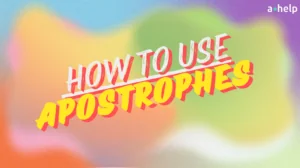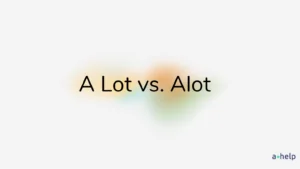Alright, let’s talk about antonyms! Antonyms are basically words that are complete opposites of each other. Think about “hot” and “cold” or “big” and “small.” Knowing antonyms is super useful because it helps you understand and describe things more clearly.

✅ AI Essay Writer ✅ AI Detector ✅ Plagchecker ✅ Paraphraser
✅ Summarizer ✅ Citation Generator
Antonyms play a big role in both language and literature. They spice up our vocabulary, making our conversations more colorful and precise. Imagine telling a story and instead of just saying someone is “not happy,” you say they’re “miserable.” It’s a lot more vivid, right? In literature, writers use antonyms to create strong contrasts and highlight differences between characters, settings, or ideas. This technique makes stories more engaging and dynamic.
So, when you’re writing an essay, reading a book, or just chatting with friends, throwing in some antonyms can really amp up your communication game. They help paint a clearer picture and keep things interesting. Let’s dive in!
What Is an Antonym?
Antonyms are words that have opposite meanings. Think of them as pairs that are completely different from each other. For example, “hot” is the opposite of “cold,” and “big” is the opposite of “small.” These pairs help us understand and describe the world around us more accurately.
Let’s look at some examples to get a better grasp of antonyms:
- Happy and Sad – feeling good vs. feeling bad.
- Fast and Slow – moving quickly vs. moving slowly.
- Light and Dark – brightness vs. lack of light.
- Tall and Short – height differences.
- Open and Closed – whether something is accessible or not.
- Strong and Weak – level of strength.
- Full and Empty – whether something is filled or not.
- Old and Young – age difference.
- Rich and Poor – wealth status.
- Clean and Dirty – level of cleanliness.
It’s important to use antonyms because they add variety and precision to our language and grammar. They allow us to express ourselves more clearly, make our communication more interesting, and create contrasts and highlight differences, making our descriptions more vivid and engaging. So, next time you want to describe something, think about its opposite – it might just make your point even stronger!
Types of Antonyms
Antonyms come in different types, each with its own unique way of showing opposites. Let’s break down the three main types of antonyms: gradable, complementary, and relational.
⭐️ Gradable Antonyms
These antonyms deal with opposites that exist on a spectrum or scale, meaning there are varying degrees between the two extremes. For example, “happy” and “sad” are gradable antonyms because emotions can range from very happy to very sad, with many levels in between. Other examples include “warm” and “cool,” “bright” and “dim,” and “loud” and “quiet.” You can describe something as very bright or just a little dim, showing the degrees of intensity between the two opposites.

💫 Complementary Antonyms
These antonyms are pairs where the presence of one state means the absence of the other. They are mutually exclusive; something cannot be both at the same time. For instance, “open” and “closed” are complementary antonyms – if something is open, it is not closed, and vice versa. Other examples include “full” and “empty,” “absent” and “present,” and “correct” and “incorrect.” These pairs are straightforward because there’s no middle ground between them.

🌟 Relational Antonyms
These antonyms describe pairs that have a reciprocal relationship, where one cannot exist without the other. For example, “buyer” and “seller” are relational antonyms because one implies the presence of the other – a buyer buys from a seller, and a seller sells to a buyer. Other examples include “doctor” and “patient,” “parent” and “child,” and “giver” and “receiver.” These pairs show opposite roles or actions that are connected to each other.

Antonyms and Prefixes
Prefixes are small additions to the beginning of a word that can completely change its meaning, often creating antonyms. You can transform a word into its opposite by adding a prefix. This is a handy trick in English, which makes it easy to expand your vocabulary and express the opposite of a concept with just a few extra letters.
Let’s look at some common prefixes that create antonyms and see how they work. Here’s a table with five different prefixes and three examples for each:
| Prefix | |||
|---|---|---|---|
| un- | unhappy (happy) | undo (do) | unfair (fair) |
| dis- | disconnect (connect) | dislike (like) | disappear (appear) |
| in- | incomplete (complete) | invisible (visible) | inactive (active) |
| im- | impossible (possible) | impolite (polite) | immature (mature) |
| non- | nonessential (essential) | nonsmoker (smoker) | nonfiction (fiction) |
Prefixes like “un-,” “dis-,” “in-,” “im-,” and “non-” are commonly used to form antonyms. For example, adding “un-” to “happy” makes it “unhappy,” changing the meaning to the opposite. Similarly, “dis-” turns “connect” into “disconnect,” and “in-” changes “complete” to “incomplete.”
These prefixes are a simple way to modify words and their meanings, helping you express the opposite of a concept quickly and easily.
So, next time you want to say the opposite of a word, think about adding a prefix. It’s an effective way to communicate clearly and add variety to your speech or writing. Keep experimenting with prefixes, and you’ll find that they are powerful tools in the English language!
FAQ
Follow us on Reddit for more insights and updates.





Comments (0)
Welcome to A*Help comments!
We’re all about debate and discussion at A*Help.
We value the diverse opinions of users, so you may find points of view that you don’t agree with. And that’s cool. However, there are certain things we’re not OK with: attempts to manipulate our data in any way, for example, or the posting of discriminative, offensive, hateful, or disparaging material.